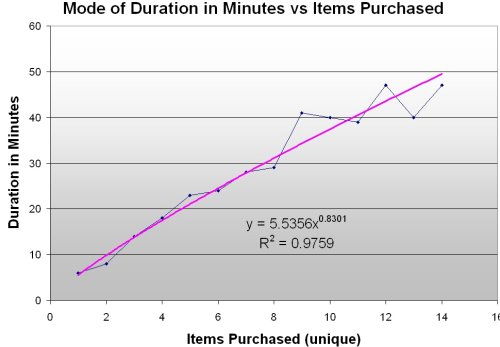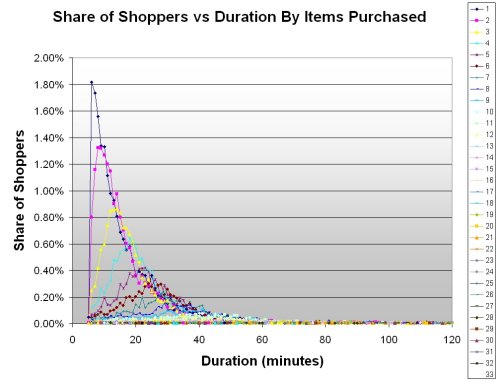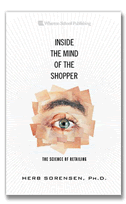What is the life experience of the average human being? Other than that they are born and die, it gets pretty complicated. That's why we don't usually ask questions like this: we recognize a certain absurdity in the concept. And yet, lot's of absurd answers are available for less than insightful questions about shopping. For example, how long is the average shopping trip? This seems like a legitimate question.
In fact, we have been thinking about this question for years, partially because classifying trips by their "length" has been done for more years than I have been in shopper research. Of course when speaking of trip length, usually people are referring to how long in minuutes. However, when we began measuring actual shopper paths, the door was opened to measuring the distance they traveled as the length of the trip. Maybe it wouldn't be too great of a stretch to consider length in relation to the number of items they purchased, or the amount of money they spent.
The number of items purchased would make a very convenient (and accurate) measure of length. In fact, in related studies of the checkout process, we find that the number of items has an obvious impact on the length of time required for checkout, with some variable time for the length of the queue and constant overhead, the final payment, etc. So it would seem that knowing the relation between trip length and the number of items purchased would be helpful.
First the good news:

This shows that there is indeed a very high correlation between the length of the shopping trip (at a supermarket) and the number of items purchased. At least when this is expressed as the mode of the trip length. (You may recall that the mode is the expression of the average as the most common value.)
However, this poorly represents, in my opinion, the underlying reality:

Each differently colored line in this curve represents the distribution of shoppers' trip lengths for that specific number of items. (the color code to the number of items is in the key at the right.) Here we see that a single item requires a very few minutes, most commonly, to purchase, although it could require quite a few minutes, and as the number of items increases, the variation in the amount of time required, grows quite rapidly. What is going on here may be easier to recognize if we look only at the three average numbers of items:
- The mode, or the most common number of items purchased, ONE!!!
- The median, half the shoppers buy more, and half buy less, five.
- The mean, the arithmetic average of all trips, twelve.

I hope this isn't getting too confusing. In the mode, median and mean of the bullet points we are referring to the number of items purchased. In the trip duration, we are referring to the minutes required to accomplish a trip purchasing that many items - which varies tremendously.
Surprised that a 20 minute trip might buy only one item? Maybe it is a spouse accompanying someone else buying a lot, but they themselves only bought a soft drink. And someone carpooling kids to an event, might easily rush in and buy 5 different candy bars in three minutes.
The point of this Views is to show how "average" can be very misleading in understanding the shopping experience. It is just too easy to have a stereotypical image in our minds of what shopping is. The very worst distortion is to assume that what doesn't match our stereotype doesn't matter. This is virtual quicksand.
Post note:
In making this Views longer than usual, I am reminded of Lord Cumberland's remark about The Decline and Fall of the Roman Empire: " Another damned thick book! Always scribble, scribble, scribble! Eh, Mr. Gibbon?"
If you will bear with me, I mentioned near the beginning of this views that trip length could also be reasonably measured in dollars. I have not done so in this case, but given the focus in earlier Views on the relation of seconds per dollar to sales efficiency, it may be worth noting that many supermarkets are performing in the 60 seconds per dollar range. Given something like $2 for the average item, we should expect something like 2 minutes for each item purchased. These are reasonable ballpark figures. But notice that the mode for each number of items is about twice this number. For example, why is the mode for 5 items 23 minutes, when efficiency measures suggest it should be more like 10 - 15 minutes? Further, half the purchases for 5 items in this particular store took longer than 23 minutes.
I cite this as further evidence that there is a massive amount of time being wasted in stores, time that can either be given back to the shopper - a huge competitive advantage, or some portion diverted to additional sales.


